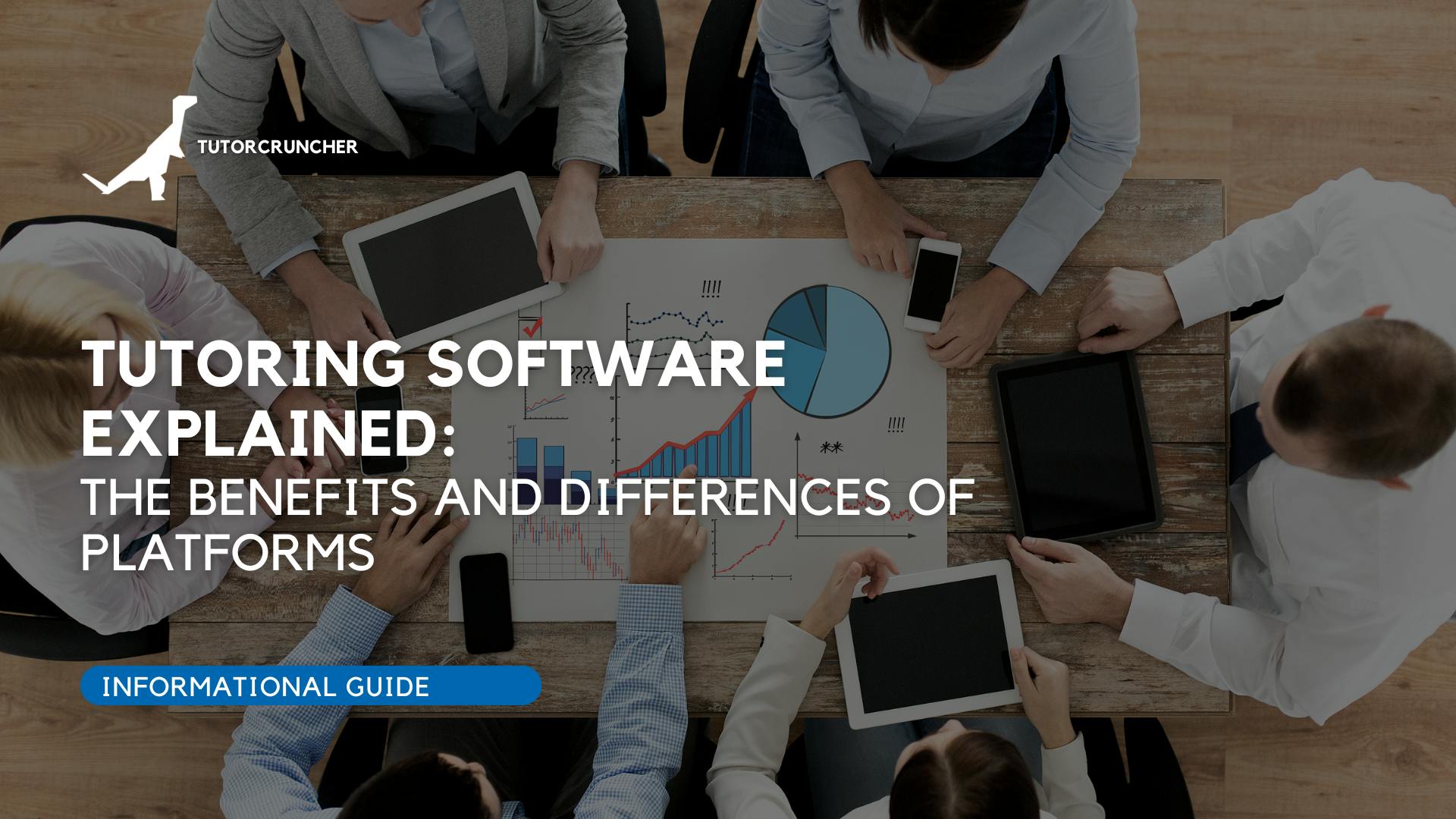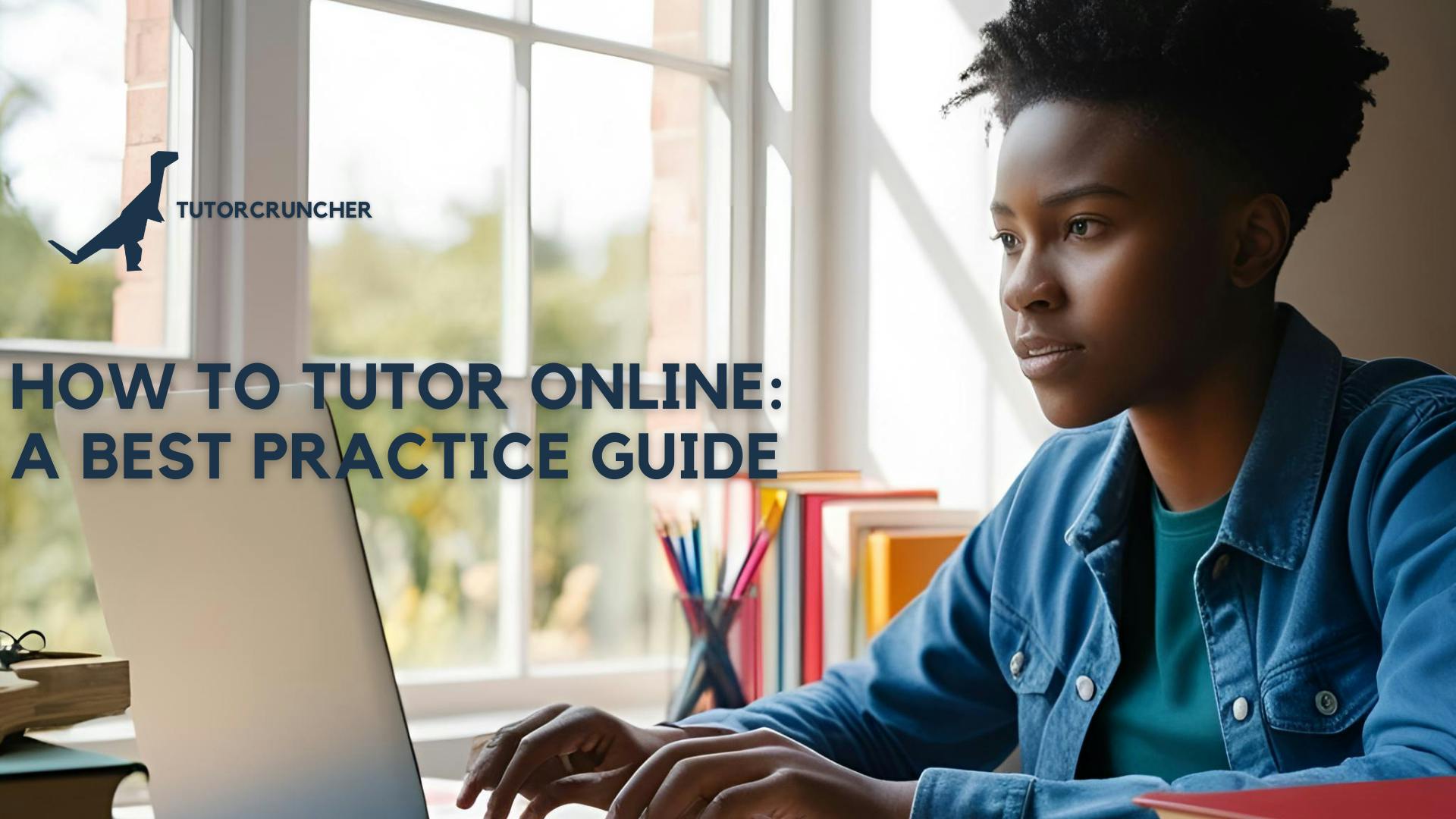Online tutoring offers an expansive realm of possibilities, transforming the way education is delivered. With the flexibility of teaching from any location and the opportunity to connect with students virtually, it's crucial that you're well-equipped to maximise this digital platform's potential.
By engaging with the right tools and strategies, you can deliver lessons effectively, maintaining the human touch that's pivotal for educational success. Ensuring a seamless online tutoring experience involves a combination of preparation and adaptation to varying needs.
From setting up reliable technology to embracing interactive tools, your approach to online tutoring should be comprehensive. Clear communication and trust-building with students are important for creating a positive learning environment.
Getting past the challenges of online education requires a blend of patience, innovation, and dedication to your students' academic growth. That said, we’ve made an in-depth guide about online tutoring tips that is full of useful info, so keep reading.
Understanding the Fundamentals of Online Tutoring

Online tutoring has transformed the landscape of education, enabling personalised learning through digital platforms. Your grasp of the core elements in online education and the pivotal role that technology plays will significantly influence your success as an online tutor.
Defining Online Education
Online education is a method of delivering educational instruction through the internet, allowing you to interact with students virtually. As an tutor online, the primary resources you’ll need include:
- A stable Wi-Fi connection
- A laptop and/or tablet
- Video conferencing software
The Role of Technology in Tutoring
Technology is the cornerstone of virtual tutoring, facilitating an online classroom setting that replicates the interactive aspects of physical classrooms. Your choice in technology should enhance the learning experience — for instance, employing an online whiteboard lets you visually explain concepts. Here's a brief overview of how different technologies serve as educational resources:
- Internet Connection: Essential for high-quality video and audio streaming.
- Devices: Must support the necessary software and be reliable.
- Video Conferencing Software: Key for real-time interaction, e.g. Zoom or Skype.
- Online Tutoring Platforms: Provide integrated tools for a seamless learning experience.
By integrating these technologies effectively, you’ll create a conducive learning environment that fosters engagement and interaction, making education a dynamic and collaborative venture.
Setting Up for Success

Before you embark on the path of online tutoring, it's vital to lay a strong foundation for your teaching. Your success hinges on meticulous lesson planning and ensuring all technological aspects are fail-safe.
- Creating an Effective Lesson Plan
Your lesson plan is a map for each tutoring session. It should outline clear objectives, materials needed, and the activities planned. Consider the following structure in your planning:
- Objective: Define what you wish your student to learn by the end of the session.
- Materials: List all resources required, such as textbooks, websites, or tutoring software.
- Activities: Plan engaging tasks that align with the lesson's goals.
- Assessment: Decide how you'll measure student understanding.
A well-constructed lesson plan adapts to individual learning styles and paces, ensuring more personalised and effective teaching online.
PS: If you’re planning for your first lesson, make sure to check out these first tutoring session ideas.
2. Ensuring Technological Reliability
Minimising technical issues is critical for a smooth tutoring session. To avoid technical difficulties, plan ahead and check the following:
- Internet Connection: Ensure a stable and strong Wi-Fi or wired connection.
- Audio Quality: Utilise a high-quality microphone and encourage your student to use headphones to reduce background noise.
- Visuals: If video is involved, a clear and focused webcam is essential.
- Backup Plan: Have an alternative method of communication such as email or a messaging app pre-arranged in case of technical failures.
Regular testing and maintenance of your equipment will help provide uninterrupted sessions, keeping both you and your student focused on the learning at hand.
Strategies for Engaging Students

To be an effective online tutor, engaging students efficiently in online tutoring. This requires targeted strategies that address distinct learning styles and motivational needs.
3. Adapting to Different Learning Styles
Visual Learners: You'll find that these students benefit from the use of graphics, diagrams, and written material. Integrate colour-coded notes and mind maps into your sessions to help visual learners maintain focus and understand complex information.
- Action: Utilise resources such as slide presentations and annotate over digital material to highlight key concepts.
Auditory Learners: These students absorb information through listening and speaking. Encourage their learning by incorporating discussions and mnemonic devices into your teaching style.
- Action: Make use of live audio chat, and consider using storytelling methods to fortify concepts.
Top tip: If you’re running a tutoring agency, it’s a great idea to match your tutors with students, based on their teaching styles and individual interests.
4. Tailoring Motivation and Encouragement Methods
To motivate your students, tailor your approach to their individual interests and goals. Recognise achievements, both big and small, to build their confidence.
- Positive Reinforcement: Praising effort can lead to an increase in student confidence and engagement.
- Action: Offer specific feedback on what the student did well to reinforce their successful behaviours.
Understanding your students' interests can act as a pivotal motivator. Relate material to real-world scenarios they care about to keep learning relevant and engaging.
- Interest-Driven Learning: When possible, integrate topics that pique your students' curiosity.
- Action: Plan activities that align with their hobbies or current events to maintain enthusiasm and focus.
Improving Communication and Building Trust

In online learning, your ability to communicate clearly and build trust with your students is crucial. Utilising video chat and email effectively, along with establishing clear rules and expectations, forms the foundation of a successful educational relationship.
5. Using Video Chat and Email Effectively
Video Chat: When using video chat, ensure your visibility is clear and maintain eye contact as much as possible. This conveys attentiveness and helps to foster trust. You should have a stable internet connection to minimise disruptions.
- Tips for a Professional Video Presence:
Ensure good lighting- Ensure good lighting
- Dress appropriately
- Check your audio and video quality beforehand
Email: Your emails should be professional and reflect the same level of respect as in-person communication. They provide a record of correspondence and can be used to clarify assignments, scheduling, and feedback.
- Best Practices for Email Communication:
Respond promptly- Respond promptly
- Use clear, concise language
- Proofread for spelling and grammatical errors
PS: Keen to make communication with your student more easy? Our comprehensive CRM can send automatic emails and SMS, gather valuable feedback, and provide you with a client pipeline.
6. Establishing Rules and Expectations
Rules: Set clear rules regarding the structure of the session, time management, and interaction etiquette. This clarity prevents misunderstandings and provides a secure learning environment.
- Sample Framework of Rules:
Start and end sessions on time- Start and end sessions on time
- No interruptions when someone is speaking
- Raise a hand to ask questions
Expectations: Clearly communicate your expectations to the students. When expectations are agreed upon and understood, it lays the groundwork for a trusted and successful online tutor-student relationship.
- Setting Expectations:
Discuss goals at the outset- Discuss goals at the outset
- Outline the structure of tutoring sessions
- Be clear about homework and assessment policies
Enhancing Educational Content Delivery

To improve your online teaching, it's essential to utilise various multimedia resources effectively and understand the critical role of feedback in the learning process.
7. Incorporating Multimedia Resources
When delivering educational content online, diversifying your delivery methods can significantly enhance student engagement. Use multimedia resources where relevant to supplement your teaching:
- Videos: Platforms like YouTube are invaluable for demonstrating concepts visually. Consider integrating relevant YouTube videos to reinforce your lessons.
- Interactive elements: Interactive quizzes and polls can aid in assessing comprehension in real time.
- Visual aids: Infographics and slides can summarise key points and make information more digestible.
It's not only about making online lessons interesting but also ensuring the content is accessible and caters to different learning styles.
Top tip: TutorCruncher’s intelligent design has over 2000 integrations (with the help of Zapier), is mobile friendly, and a built-in collaborative workspace, perfect for adding multimedia resources to your sessions.
8. Feedback and Its Importance
Feedback is a pillar of effective teaching. In an online setting, timely and constructive feedback can boost your students' confidence and guide their learning:
- Immediate: Quick quizzes or polls after lessons can provide instant insights into student understanding.
- Regular: Schedule regular one-to-one sessions to discuss progress and areas for improvement.
- Constructive: Always aim to provide feedback that is specific, actionable, and encouraging.
Remember that feedback is a two-way street; encourage your students to give their thoughts on the content and your teaching methods, ensuring continuous improvement for both parties.
9. Know What You Worth
Making sure you’re paid the right rate is key in the online tutoring industry. Here's how you can tackle this:
- Keep up with the latest rates: You need to stay updated with the latest average tutoring rates to ensure you’re being paid a competitive amount.
- Use automated invoicing: One of the easiest ways to get paid is by optimising your billing process, which TutorCruncher can help.
- Match your value with your offerings: Whether you offer specialised or high-dosage tutoring, you should charge accordingly.
Best Practices for Online Tutors

In online tutoring, maintaining a structured approach and keeping up with the evolving educational landscape are crucial to your effectiveness and productivity. Here are focused strategies for ensuring your tutoring lessons are successful.
10. Maintaining Professionalism and Punctuality
Be on time for each tutoring session. Your punctuality sets the tone for the session and demonstrates respect for your students' time. Structure your environment to minimise distractions, ensuring that your professionalism is evident through your actions and teaching space.
- Work Environment: Keep a clean, quiet, and organised space.
- Attire: Dress appropriately as it can influence your mindset and student perception.
11. Continuous Improvement and Adaptation
As an experienced tutor, embrace ongoing learning to refine your teaching methods. Employ technology to facilitate effective tutoring:
- Lesson Recordings: Offer recordings when appropriate, so students can revisit concepts.
- Interactive Tools: Use various online resources to make learning more engaging.
Adaptation is key; remain open to changing your techniques and tools to meet the diverse needs of your students. Tailor your approach to provide personalised and comprehensive support.
Top tip: If you’re looking to add some interactive tools to your tutoring lessons, TutorCruncher’s software has various built-in integrations, including Zoom, Lessonspace, and Groupworld.
Measuring Success and Student Progress

When engaging in online tutoring, effective measurement of student progress is paramount. It is essential to use tools and strategies that offer clear insight into the learning journey. One key approach is to establish measurable learning outcomes as part of your syllabus, which should be in alignment with the curriculum.
Utilise data analytics to regularly gauge these outcomes. These metrics can include:
- Test scores
- Completion of set tasks
- Quality of assignments
Feedback plays a critical role in assessing both effectiveness and providing guidance. It should be:
- Specific
- Timely
- Constructive
Incorporate self and peer assessment opportunities, enabling students to reflect on their learning and understand different perspectives.
Student progress can be tracked through:
- Formative assessments: small, frequent tests or quizzes.
- Summative assessments: larger evaluations at the end of units or terms.
Use a tracking table to help visualise progress:
![]()
Frequently Asked Questions
These FAQs address common concerns and provide targeted advice to enhance your online tutoring experience whether you're an online teacher or a tutoring agency.
How can teachers enhance their online tutoring sessions?
Teachers can enhance their sessions by incorporating interactive content like videos and quizzes, using collaborative tools such as digital whiteboards, and providing personalised feedback to keep students engaged and cater to their individual learning styles.
What steps can you take to organise a successful online tutoring session using a whiteboard?
To organise a successful online tutoring session with a whiteboard, prepare your materials in advance, practise using the whiteboard software features, and create an agenda that includes whiteboard activities to keep the session structured and interactive.
How can you continue growing your online tutoring business?
You can grow your tutoring business by identifying your niche, using effective tutor marketing strategies to reach potential students, regularly updating your teaching methods with the latest online educational tools, and networking with other tutors to share resources and referrals.
Wrapping Up the Best Online Tutoring Tips
To be a successful online tutor, it’s important to keep your lessons interactive and provide your students with useful online tools. One fantastic way to do this is through using our brilliant tutor management software.
Not only can it help you get helpful feedback from your clients, but it can send out automated appointment reminders with its easy-to-use scheduling software. With all these tools, you’ll be able to track student progress easily.
Being a professional tutor can be rewarding, especially if you keep up to date with the latest online tools, take student feedback seriously, and communicate effectively. By doing all this, you’ll be marketing yourself as a reliable tutor, which could result in your increasing your hourly rate and spreading your offerings by word of mouth.



